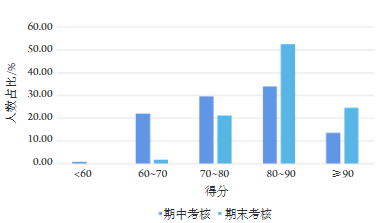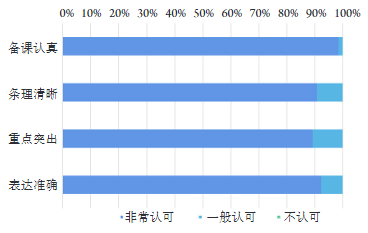1、中华人民共和国教育部. 高等学校人工智能创新行动计划[EB/OL]. [2018-04-03]. http://www.moe.gov.cn/srcsite/A16/s7062/201804/t20180410_332722.html. 中华人民共和国教育部. 高等学校人工智能创新行动计划[EB/OL]. [2018-04-03]. http://www.moe.gov.cn/srcsite/A16/s7062/201804/t20180410_332722.html.
2、 Action Plan for Artificial Intelligence Innovation in Colleges and Universities[EB/OL]. [2018-04-03]. http://www.moe.gov.cn/srcsite/A16/s7062/201804/t20180410_332722.html. Action Plan for Artificial Intelligence Innovation in Colleges and Universities[EB/OL]. [2018-04-03]. http://www.moe.gov.cn/srcsite/A16/s7062/201804/t20180410_332722.html.
3、国务院办公厅. 国务院办公厅关于加快医学教育创新发展的指导意见[EB/OL]. [2020-09-23]. http://www.gov.cn/zhengce/content/2020-09/23/content_5546373.htm?trs=1.国务院办公厅. 国务院办公厅关于加快医学教育创新发展的指导意见[EB/OL]. [2020-09-23]. http://www.gov.cn/zhengce/content/2020-09/23/content_5546373.htm?trs=1.
4、 Guiding Opinions of the General Office of the State Council on Accelerating the Innovative Development of Medical Education[EB/OL]. [2020-09-23]. http://www.gov.cn/zhengce/content/2020-09/23/content_5546373.htm?trs=1. Guiding Opinions of the General Office of the State Council on Accelerating the Innovative Development of Medical Education[EB/OL]. [2020-09-23]. http://www.gov.cn/zhengce/content/2020-09/23/content_5546373.htm?trs=1.
5、Xiang Y, Zhao L, Liu Z, et al. Implementation of artificial intelligence in medicine: Status analysis and development suggestions[J]. Artif Intell Med, 2020, 102: 101780.Xiang Y, Zhao L, Liu Z, et al. Implementation of artificial intelligence in medicine: Status analysis and development suggestions[J]. Artif Intell Med, 2020, 102: 101780.
6、Topol EJ. High-performance medicine: the convergence of human and artificial intelligence[J]. Nat Med, 2019, 25(1): 44-56.Topol EJ. High-performance medicine: the convergence of human and artificial intelligence[J]. Nat Med, 2019, 25(1): 44-56.
7、习近平:加强人工智能在教育医疗住房等领域深度应用[J]. 医学信息学杂志, 2018(11): 95. 习近平:加强人工智能在教育医疗住房等领域深度应用[J]. 医学信息学杂志, 2018(11): 95.
8、 Journal of Medical Informatics, 2018(11): 95. Journal of Medical Informatics, 2018(11): 95.
9、应明真, 刘夙璇, 陈晰辉, 等. 变革中的医学教育——从信息时代到人工智能[J]. 医学教育研究与实践, 2018, 26(5): 721-723. 应明真, 刘夙璇, 陈晰辉, 等. 变革中的医学教育——从信息时代到人工智能[J]. 医学教育研究与实践, 2018, 26(5): 721-723.
10、 Reforming medical education-from the age of information to the age of artificial intelligence[J]. Medical Education Research and Practice, 2018, 26(5): 721-723. Reforming medical education-from the age of information to the age of artificial intelligence[J]. Medical Education Research and Practice, 2018, 26(5): 721-723.
11、王梦溪, 王娜, 张欣多, 等. 人工智能医学教学平台的构建[J]. 中国高等医学教育, 2020, 279(3):53-55. 王梦溪, 王娜, 张欣多, 等. 人工智能医学教学平台的构建[J]. 中国高等医学教育, 2020, 279(3):53-55.
12、 Theoretical development of AI medical education platform[J]. Higher Medical Education in China, 2020, 279(3): 53-55. Theoretical development of AI medical education platform[J]. Higher Medical Education in China, 2020, 279(3): 53-55.
13、Mervis J. U.S. law sets stage for boost to artificial intelligence research[J]. Science, 2021, 371(6525): 112-113.Mervis J. U.S. law sets stage for boost to artificial intelligence research[J]. Science, 2021, 371(6525): 112-113.
14、Bi WL, Hosny A, Schabath MB, et al. Artificial intelligence in cancer imaging: Clinical challenges and applications[J]. CA Cancer J Clin, 2019, 69(2): 127-157.Bi WL, Hosny A, Schabath MB, et al. Artificial intelligence in cancer imaging: Clinical challenges and applications[J]. CA Cancer J Clin, 2019, 69(2): 127-157.
15、Bera K, Schalper KA, Rimm DL, et al. Artificial intelligence in digital pathology - new tools for diagnosis and precision oncology[J]. Nat Rev Clin Oncol, 2019, 16(11): 703-715.Bera K, Schalper KA, Rimm DL, et al. Artificial intelligence in digital pathology - new tools for diagnosis and precision oncology[J]. Nat Rev Clin Oncol, 2019, 16(11): 703-715.
16、成洪波. 充分发挥高校思想政治教育协同育人力量[J]. 中国高等教育, 2020(5):35-37. 成洪波. 充分发挥高校思想政治教育协同育人力量[J]. 中国高等教育, 2020(5):35-37.
17、 Giving full play to the collaborative force of ideological and political education in colleges and universities[J]. China Higher Education, 2020(5): 35-37. Giving full play to the collaborative force of ideological and political education in colleges and universities[J]. China Higher Education, 2020(5): 35-37.
18、杨云莉, 刘立义. \课程思政\背景下的医学生思想政治教育[J]. 临床医药文献电子杂志, 2020, 7(24): 186.杨云莉, 刘立义. \课程思政\背景下的医学生思想政治教育[J]. 临床医药文献电子杂志, 2020, 7(24): 186.
19、 Ideological and political education of medical students under the background of \curriculum politics\[J]. Electronic Journal of Clinical Medical Literature, 2020, 7(24): 186. Ideological and political education of medical students under the background of \curriculum politics\[J]. Electronic Journal of Clinical Medical Literature, 2020, 7(24): 186.
20、Barrows HS. Problem-based learning in medicine and beyond: A brief overview[J]. New Directions for Teaching and Learning, 1996, 1996(68): 3-12.Barrows HS. Problem-based learning in medicine and beyond: A brief overview[J]. New Directions for Teaching and Learning, 1996, 1996(68): 3-12.
21、台保军, 王革, 黄翠, 等. PBL教学模式的评价体系[J]. 口腔医学研究, 2007, 23(1): 112-113.台保军, 王革, 黄翠, 等. PBL教学模式的评价体系[J]. 口腔医学研究, 2007, 23(1): 112-113.
22、 Evaluation system of PBL teaching model[J]. Research on Stomatology, 2007, 23(1): 112-113. Evaluation system of PBL teaching model[J]. Research on Stomatology, 2007, 23(1): 112-113.
23、Kendal-Wright C, Kasuya R. Team based learning: a potential addition to the JABSOM curriculum[J]. Hawaii Med J, 2010, 69(10): 247-248.Kendal-Wright C, Kasuya R. Team based learning: a potential addition to the JABSOM curriculum[J]. Hawaii Med J, 2010, 69(10): 247-248.
24、Michaelsen LK, Watson W, Cragin JP, et al. Team learning: a potential solution to the problems of large classes[J]. Journal of Management Education, 1982, 7(1):13-22.Michaelsen LK, Watson W, Cragin JP, et al. Team learning: a potential solution to the problems of large classes[J]. Journal of Management Education, 1982, 7(1):13-22.
25、张艺凡, 王渊, 李文菲, 等. 医学教育领域基于问题学习研究的热点与趋势分析[J]. 中华医学教育杂志, 2020, 40(10): 757-761.张艺凡, 王渊, 李文菲, 等. 医学教育领域基于问题学习研究的热点与趋势分析[J]. 中华医学教育杂志, 2020, 40(10): 757-761.
26、 Analysis of research hotspots and trends of problem-based learning in medical education[J]. Chinese Journal of Medical Education, 2020, 40(10): 757-761. Analysis of research hotspots and trends of problem-based learning in medical education[J]. Chinese Journal of Medical Education, 2020, 40(10): 757-761.
27、黄文权, 邓弟超. 浅谈医学论文综述写作要点[J]. 中华医学写作杂志, 1997, 4(1): 19. 黄文权, 邓弟超. 浅谈医学论文综述写作要点[J]. 中华医学写作杂志, 1997, 4(1): 19.
28、 Talking about the key points of medical paper review[J]. Chinese Journal of Medical Writing, 1997, 4(1): 19. Talking about the key points of medical paper review[J]. Chinese Journal of Medical Writing, 1997, 4(1): 19.
29、徐克前, 彭剑雄, 罗建新, 等. 本科生开展综述写作的实践与探讨[J]. 中国现代医学杂志, 2004, 14 (11): 158-159.徐克前, 彭剑雄, 罗建新, 等. 本科生开展综述写作的实践与探讨[J]. 中国现代医学杂志, 2004, 14 (11): 158-159.
30、 Practice and discussion of undergraduate review writing[J]. China Journal of Modern Medicine, 2004, 14 (11): 158-159. Practice and discussion of undergraduate review writing[J]. China Journal of Modern Medicine, 2004, 14 (11): 158-159.




